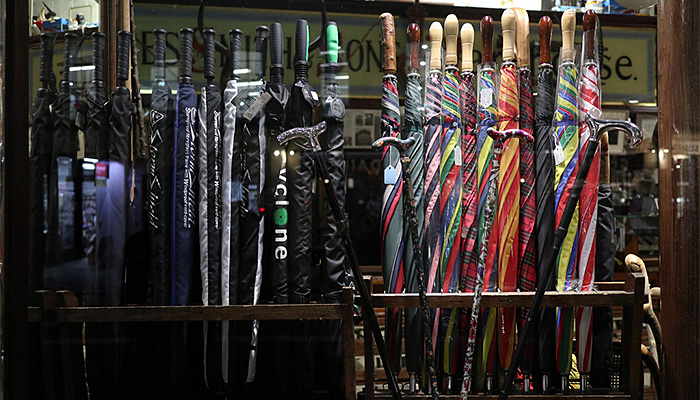
To my untrained non-artistic eye, it’s difficult to say much about a single brush stroke in isolation. I suppose we can see it’s colour, its size, the general style. However, beyond that I’m kind of stuck. It’s only when we see the brush strokes of a painting on aggregate that a picture finally emerges. Suddenly what appear like random brush strokes coalesce to tell a story, to speak to the viewer. In a sense, there is a parallel in the way we relate to a place. I’ve lived in London for many years.
Every journey I make across the city, is like an additional brush stroke in a painting, filling in the picture of how I view this great city. Riding a bus, those brush strokes are blurred, but travelling on foot, it’s though my eyes are repeatedly taking photos, of the shops, the people, the life. There’s always something new I notice, even if it’s a street I’ve been on many times before. Just last week, I walked past a shop which only sold umbrellas near the British Museum. I’m sure I must’ve have passed it before but this was the first time I stopped for a moment to peer through the window. However, this painting of London I have in my mind is imperfect. It is incomplete, patchy and in some places totally empty, after all there are many parts of London I’ve ventured to. Many Tube stops are names on the map, for which I have no visual representation.
It’s like the market. We might have our view about the market, about specific assets or instruments. However, outside of that, it all becomes a bit patchy. We can either drill into the detail of something specific or view things at a higher level, at macro or sector perspective. Every day, every trade, every price move is that additional brush stroke, painting a fuller picture of what goes on. In a sense, using quant analysis of the markets is like being able to paint many brush strokes at the same time. We can crunch away at numbers to shed light on a specific area, ingesting lots of information which a human alone simply wouldn’t have the time. The difficulty is that, simply painting more, doesn’t necessarily make a painting better. When doing quant analysis, we need to know what our objective is. Are we trying to statistically validate a market behaviour we think we observe? Are we trying to improve our understanding of market sentiment? Are we trying to unearth price moves which seem unusual versus their peers? Are we trying to improve our execution through the use of transaction cost analysis on masses of market tick data and our own trade data? Are we trying to find an alternative dataset that can give us a specific edge in the way we forecast the market? The list of questions which we could answer using quant analysis is of course endless, but the key is to be able to articulate what that question!
The notion of simply doing “quant”, always in the abstract, is not really that helpful. Quant isn’t some magic to help us, it’s a tool that we need to guide. To go back to our painting analogy, a totally undirected approach, is like throwing paint at a canvas expecting to create a masterpiece. Yes, it might work for Jackson Pollock, but then again, I’m not Jackson Pollock. (I have a severe doubts whether any quant can successfully be Jackson Pollock).
Quant tools are a great way to deepen our understanding of the market whether you’re a systematic trader or a fundamental investor, but only if used wisely and with a purpose. In particular, we shouldn’t think that just because you’re a fundamental investor quant tools are not useful. The difference is that a fundamental investor will ask different questions of quant analysis compared to for example a quant fund. One last thing, apologies if next time you look at a painting and you’ll be thinking of quant analysis! Hopefully you’ll enjoy learning to paint quant too!